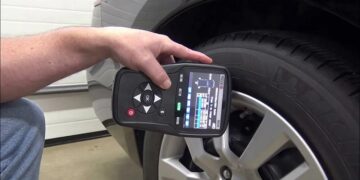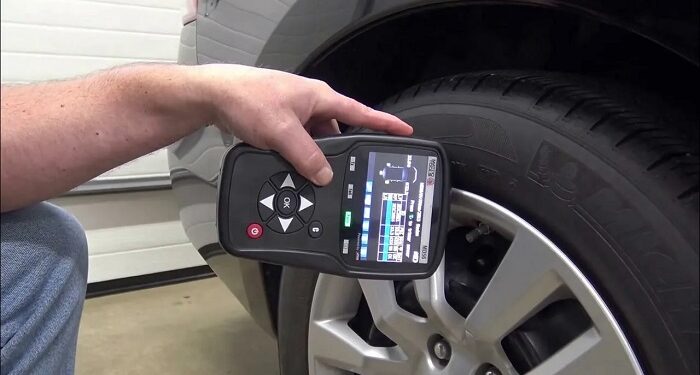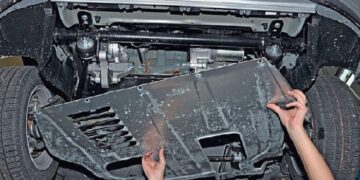Outline for “Monitoring tire pressure to improve fuel economy on Milwaukee dry-van hauls”.
1. Introduction: Importance of tire pressure in boosting MPG on dry-van routes 2. Understanding Tire Pressure and PSI Thresholds: Optimal levels for Milwaukee hauls 3. The Role of TPMS (Tire Pressure Monitoring Systems): Real-time pressure alerts and benefits 4. Impact of Low-Rolling Tire Pressure on Fuel Economy: How underinflation drives up fuel cost 5. Auto-Inflate Technologies: Streamlining maintenance plans and ensuring consistent tire PSI 6. Tread Depth and Its Relation to Tire Pressure: Maximizing tire life and efficiency 7. Practical Tips for Drivers: Monitoring, adjusting, and maintaining ideal tire pressure 8. Conclusion: Sustainable savings through diligent tire pressure management on dry-van hauls
1. Introduction: Importance of Tire Pressure in Dry-Van Fuel Economy
Maintaining proper tire pressure is a critical yet often overlooked factor in maximizing fuel economy on Milwaukee dry-van hauls. When tires run below the optimal PSI threshold, they increase rolling resistance — commonly known as low-rolling tire pressure — leading to higher fuel cost and reduced MPG. Leveraging technologies like TPMS and auto-inflate systems not only streamlines your maintenance plan but also ensures consistent tire pressure, improving fuel efficiency and extending tread depth life. For dry-van fleets focused on sustainability and savings, diligent monitoring of tire pressure directly translates into better fuel economy and lowered operational expenses. This article explores why maintaining ideal tire pressure is essential for boosting MPG and how Milwaukee haulers can benefit from real-time pressure management tools.
2. Understanding TPMS Technology
Tire Pressure Monitoring Systems (TPMS) are revolutionary tools that help dry-van operators maintain optimal tire pressure, directly impacting tire pressure MPG and overall fuel economy. Here’s how TPMS technology works and why it’s essential for Milwaukee hauls:
- Real-Time Pressure Monitoring: TPMS continuously tracks each tire’s PSI levels, alerting drivers instantly if pressure falls below the recommended threshold. This proactive monitoring prevents low-rolling tire conditions that increase fuel cost.
- Enhanced Safety and Efficiency: Maintaining correct tire pressure with TPMS reduces tire wear and tread depth degradation, extending tire life and improving handling on long dry-van routes.
- Integration with Auto-Inflate Systems: Many TPMS setups pair seamlessly with auto-inflate technologies, automating pressure adjustments to keep tires at ideal PSI and simplifying your maintenance plan.
- Data-Driven Maintenance: TPMS provides fleet managers with valuable insights, enabling predictive maintenance and reducing downtime caused by underinflated tires.
- Fuel Economy Benefits: By keeping tires properly inflated, TPMS helps lower rolling resistance, boosting fuel economy and cutting operational expenses on Milwaukee dry-van hauls.
Understanding and leveraging TPMS technology is a smart step toward smarter, more sustainable dry-van transport with measurable fuel savings.
3. Establishing an Effective Air-Inflation Routine
Creating a reliable air-inflation routine is key to maintaining optimal tire pressure MPG and maximizing fuel economy on Milwaukee dry-van hauls. Follow these steps to build an efficient process:
- Set PSI Thresholds for Each Tire: Consult manufacturer guidelines and consider load-specific PSI levels to determine the ideal inflation point for your dry-van tires.
- Schedule Regular Pressure Checks: Incorporate daily or pre-trip inspections into your maintenance plan to catch low-rolling tire conditions early and reduce fuel cost impact.
- Use TPMS Alerts as a Primary Guide: Rely on real-time monitoring systems to promptly identify pressure drops and trigger timely inflation actions.
- Incorporate Auto-Inflate Technology: Whenever possible, integrate auto-inflate systems that automatically adjust tire pressure, ensuring consistent PSI levels without manual intervention.
- Document and Track Inflation Data: Maintain logs of inflation activities and pressure readings to analyze trends, optimize tread depth preservation, and forecast maintenance needs.
- Train Drivers and Staff: Educate your team on the importance of tire pressure management to encourage accountability and enhance routine adherence.
By establishing and adhering to a systematic air-inflation routine, Milwaukee dry-van operators can prevent underinflation, extend tire life, and secure sustained improvements in fuel economy.
4. Interpreting Rolling Resistance Charts for Fuel Savings
Understanding rolling resistance charts is vital for Milwaukee dry-van operators aiming to optimize tire pressure MPG and reduce fuel cost. Here’s how to effectively interpret these charts to enhance fuel economy:
- Identify PSI Thresholds Linked to Rolling Resistance: Charts graph rolling resistance against different PSI levels. Locate the optimal PSI threshold where rolling resistance is minimized to maintain ideal tire pressure.
- Spot the Impact of Low-Rolling Tire Pressure: Observe how underinflation sharply increases rolling resistance, which directly drives up fuel consumption and costs on long-haul dry-van routes.
- Correlate Rolling Resistance with Fuel Economy Gains: Use the chart data to estimate potential MPG improvements by maintaining tires at optimal PSI, highlighting how even slight pressure drops can affect fuel economy.
- Evaluate Auto-Inflate Benefits: Rolling resistance charts often demonstrate how consistent inflation via auto-inflate technology stabilizes PSI, reducing fuel cost spikes caused by fluctuating tire pressure.
- Incorporate Tread Depth Considerations: Recognize that worn tread depth can alter rolling resistance patterns; integrating tread condition data ensures more accurate fuel savings predictions.
- Use Chart Insights to Refine Maintenance Plans: Analyze rolling resistance trends to tailor inflation schedules and TPMS alerts, ensuring sustained fuel economy improvements over time.
By mastering rolling resistance charts, dry-van fleets in Milwaukee can make informed decisions that translate into measurable fuel savings and smarter tire pressure management.
5. Setting and Maintaining the Optimal PSI Threshold
Establishing the correct PSI threshold is crucial for maximizing tire pressure MPG and improving fuel economy on Milwaukee dry-van hauls. The optimal PSI varies based on load, route conditions, and tire specifications, but staying within manufacturer-recommended limits ensures minimal rolling resistance and safer handling. Integrating TPMS with auto-inflate technology helps maintain this ideal PSI threshold consistently, reducing the risks associated with low-rolling tire pressure. A proactive maintenance plan should include regular monitoring of tire pressure and tread depth, as worn tires affect inflation efficiency and fuel cost. By calibrating alerts for pressure deviations and automating inflation adjustments, fleets minimize downtime and prevent gradual underinflation that erodes fuel economy. Maintaining the optimal PSI threshold not only extends tire life but also delivers sustained savings on fuel expenses, making it an essential practice for dry-van operators committed to efficiency and cost-effectiveness on Milwaukee routes.
6. Selecting Low-Rolling Tires and Monitoring Tread Depth
Choosing low-rolling resistance tires is a strategic move for Milwaukee dry-van hauls aiming to enhance tire pressure MPG and reduce fuel cost. These specialized tires are engineered to minimize rolling resistance, helping maintain optimal PSI thresholds with less effort and supporting better fuel economy. When paired with TPMS and auto-inflate technologies, low-rolling tires ensure consistent inflation levels, reducing the risk of underinflation that spikes fuel consumption.
Equally important is monitoring tread depth, as worn tires increase rolling resistance and degrade tire pressure efficiency. Regularly checking tread depth should be an integral part of your maintenance plan, allowing timely tire rotations or replacements before fuel economy suffers. Maintaining proper tread depth ensures tires grip the road effectively while preserving their low-rolling characteristics.
By combining the selection of low-rolling resistance tires with diligent tread depth monitoring and automated pressure management, Milwaukee dry-van fleets can significantly extend tire life, improve safety, and achieve sustainable fuel savings. This holistic approach is key to maximizing the benefits of tire pressure management on every haul — and it’s also a crucial element in many successfultruck driving careers.
7. Integrating Tire Pressure Monitoring into a Maintenance Plan
To fully capitalize on tire pressure MPG gains, integrating TPMS into your dry-van maintenance plan is essential. Start by setting clear PSI thresholds tailored to your Milwaukee routes, ensuring tires stay within optimal inflation levels. Use TPMS alerts as real-time triggers for corrective action, preventing low-rolling tire conditions that spike fuel cost. Pair TPMS with auto-inflate systems to automate pressure adjustments, reducing manual checks and streamlining workflows. Incorporate regular tread depth inspections alongside pressure monitoring to maintain tire efficiency and prolong tire life. Documenting all pressure readings and maintenance activities helps identify trends and forecast service needs, optimizing your plan’s effectiveness. By embedding tire pressure monitoring into routine maintenance, fleets achieve consistent fuel economy improvements, lower operational expenses, and enhanced safety. This proactive approach transforms tire care from reactive fixes into a strategic advantage for Milwaukee dry-van hauls focused on sustainability and cost savings.
Table
8. Calculating Fuel Cost Savings through Improved Tire Pressure
Accurately calculating fuel cost savings from maintaining optimal tire pressure is a compelling way to demonstrate the tangible benefits of diligent tire pressure management on Milwaukee dry-van hauls. When tires consistently operate at the recommended PSI threshold, rolling resistance decreases significantly, leading to notable improvements in tire pressure MPG and overall fuel economy.
For example, studies show that every 1 psi drop below the optimal pressure can reduce fuel efficiency by about 0.3%. On a typical dry-van haul consuming thousands of gallons annually, this percentage translates into substantial extra fuel cost. By leveraging TPMS and auto-inflate technologies, fleets can maintain precise tire inflation, preventing low-rolling tire conditions that otherwise drive up fuel expenses.
To quantify savings, multiply your fleet’s average fuel consumption by the percentage increase in fuel economy gained through proper tire inflation. If a fleet averages 6 MPG and improves by 3% due to consistent PSI maintenance, this equates to a higher effective mileage and lower fuel usage per mile. Over time, these incremental savings add up, offsetting tire maintenance costs and boosting the bottom line.
Integrating regular PSI checks into your maintenance plan not only extends tread depth and tire life but delivers measurable fuel cost reductions, making improved tire pressure management an essential strategy for Milwaukee dry-van operators pursuing efficiency and sustainability.
9. Conclusion: Maximizing MPG on Milwaukee Dry-Van Hauls through Tire Pressure Management
Consistently monitoring and maintaining optimal tire pressure is a proven strategy to boost fuel economy on Milwaukee dry-van hauls. As explored, underinflated tires increase rolling resistance, directly reducing miles per gallon (MPG) and inflating operational costs. Implementing routine pressure checks, leveraging advanced tire pressure monitoring systems (TPMS), and training drivers to recognize pressure-related issues not only extends tire life but also enhances safety and reduces emissions. By integrating these best practices, fleet operators can achieve measurable fuel savings, increase haul efficiency, and maintain competitive edge in the bustling Milwaukee logistics market. Prioritizing tire pressure management is a simple yet powerful step toward greener, cost-effective dry-van operations, ensuring every mile delivers maximum value and environmental responsibility.

































